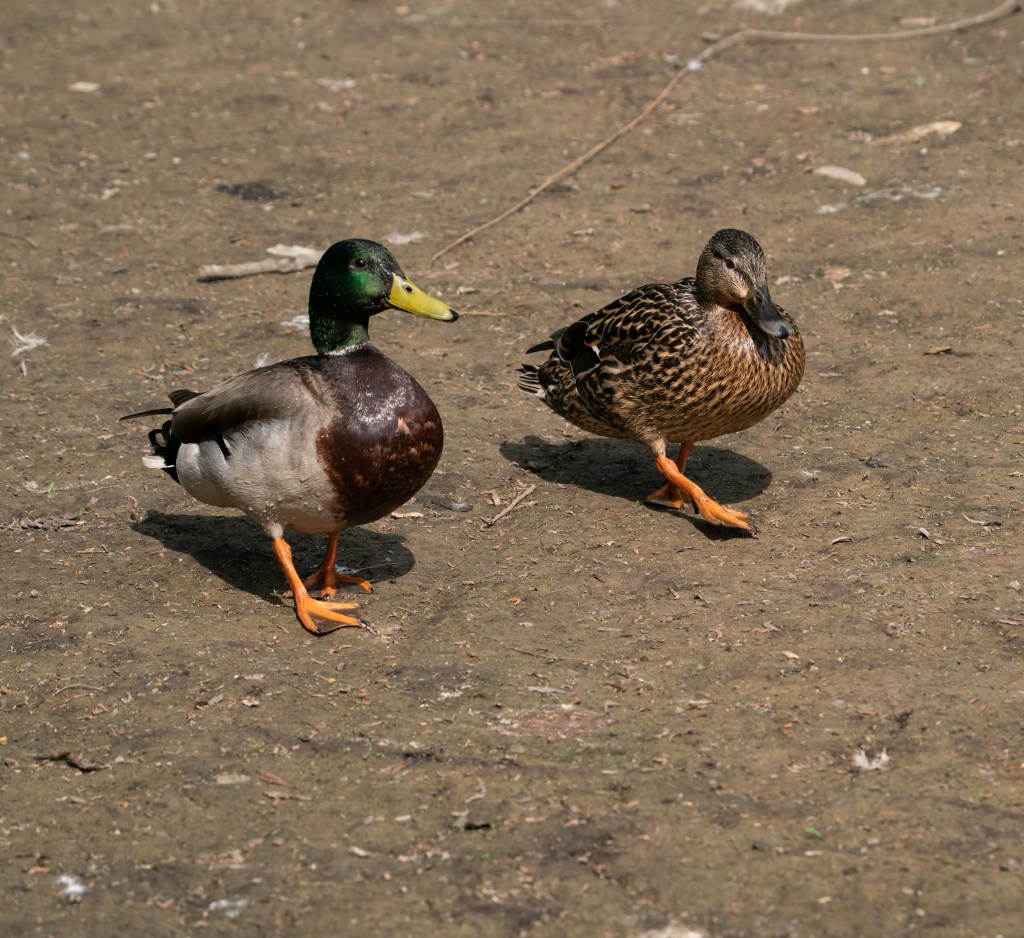Mallards can have two broods during the season and ducklings can number from 1 – 13 in each.

Eggs are incubated for 23 – 30 days.

These little down-covered ducklings are out of the nest in less than one day.

During the breeding season, Mallards eat mainly animal matter including aquatic insect larvae, earthworms, snails and freshwater shrimp.

MYSTERY BIRD
I will identify it at the end of the post.

Migration certainly appears to be over, at least at Lambton Woods. I didn’t have a single migrating bird.
Here are the birds I was able to photograph:








Views from Lambton Woods:



Some botany:























MYSTERY BIRD
Despite the lack of gold colour this is a recently bathed female American Goldfinch.

NATURE POETRY
May is bee in blossom,
May is birds a-nesting,
May is picking violets on a hill;
May is young and twenty,
May is Sunday-besting,
May is eager Jack and willing Jill. – The Old Farmer’s Almanac, 1961
Miles Hearn

Looks very summery out there. I THOUGHT I recognized the mystery bird–which is to say, it looked FAMILIAR. But I couldn’t place it. I just knew it was something you had shown us before. I was right (at least about that!) The ducklings are adorable–of course. And the botany was very nice to see, as were the remaining birds. And finally–ta da! Skunk-cabbage! Thanks, Miles!
OOOHHH!!! those ducklings are so cute and big!!! and mr.& mrs. Mallard,strutting their stuff. also the beautiful wild flowers,so nice to see…..Thank You Miles…….
ps: I like the Mystery Birds….but I still don’t too many right………..hmhmhm
OOOHHH!!! those ducklings are so cute and big!!! and mr.& mrs. Mallard,strutting their stuff. also the beautiful wild flowers,so nice to see…..Thank You Miles…….
Must be the season!! Saw wood ducklings at High Park and at least one family of red necked grebes had had their chicks –both seen on Monday of the past week, the latter at Colonel Sam Smith park
The grebe chicks are still in the nest and are very tiny but striping can be seen even at a distance. The wood duckling are out swimming with Mom already.
Do all elms have flower/seed parts similar to the Siberian elm? For two days this past we have had an accumulation of these whitish blossoms. When my husband was in the Keele/Dundas area he noticed the same blossoms floating in the air.
Your Botany to-day was amazing…..
The ordinary can be so special…….!